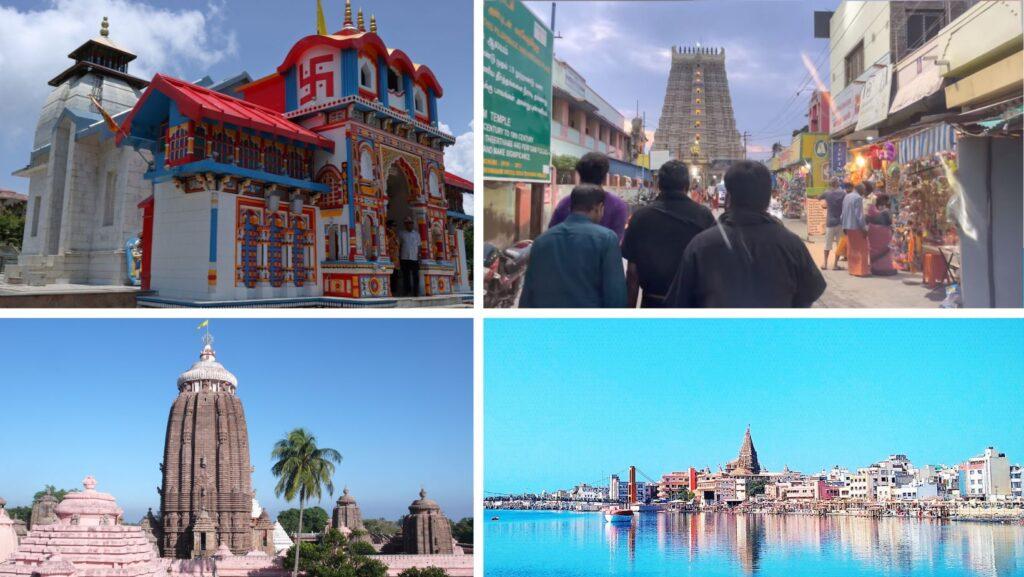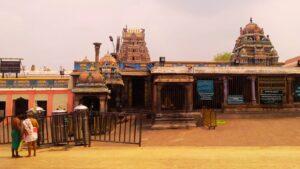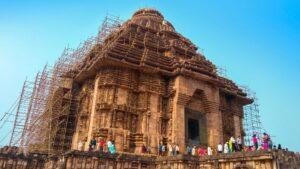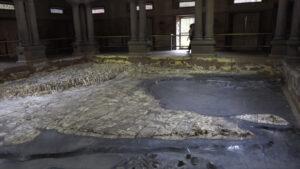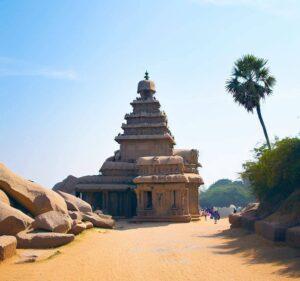Char Dham in India is a term that refers to four sacred temples that are located in different parts of the country. These temples are believed to be the abodes of four different deities, and visiting them is considered to be a way of attaining salvation and blessings.
What is Char Dham in India?
- Badrinath – Chamoli district of Uttarakhand
- Dwarka – Devbhoomi Dwarka district of Gujarat
- Jagannath Puri – Puri district of Odisha
- Rameswaram – Ramanathapuram district of Tamil Nadu
Badrinath:
This temple is dedicated to Lord Vishnu, the preserver of the universe. It is located in the Chamoli district of Uttarakhand, on the banks of the Alaknanda River. The temple is surrounded by snow-capped mountains and has a black stone idol of Vishnu as the main deity. Badrinath is one of the 108 Divya Desams or holy shrines of Vishnu.
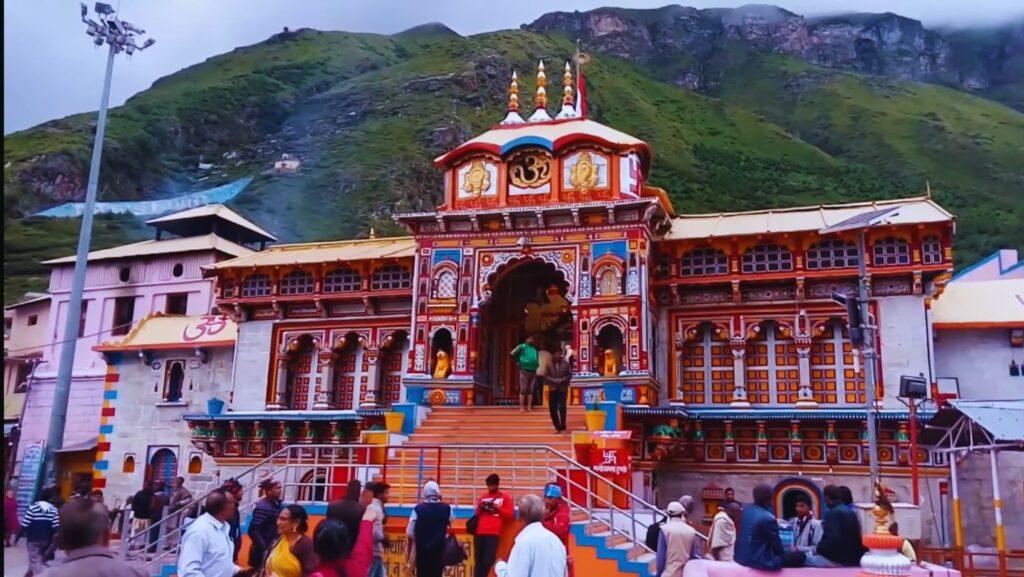
Dwarka:
This temple is dedicated to Lord Krishna, the eighth incarnation of Vishnu. It is located in the Devbhoomi Dwarka district of Gujarat, on the western shore of the Arabian Sea. The temple is also known as Jagat Mandir, or the universal temple, and is believed to be the site of Krishna’s kingdom. Dwarka is one of the four Chardham as well as one of the seven Sapta Puri, or holy cities of India.
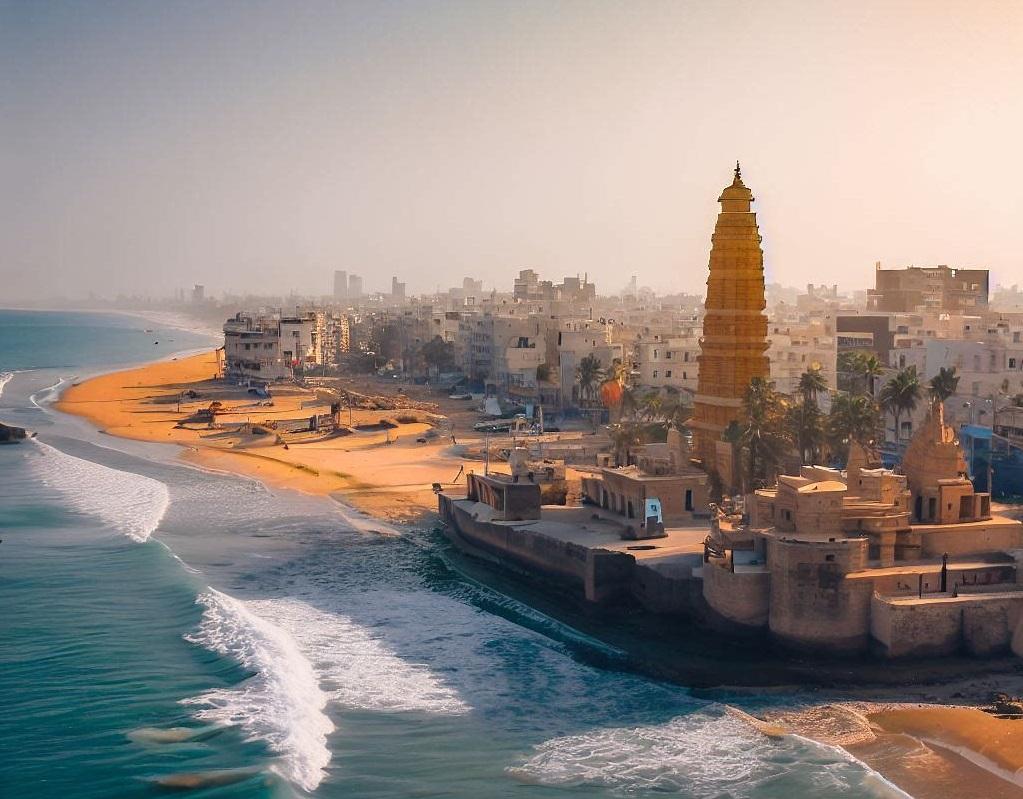
Jagannath Puri:
This temple is dedicated to Lord Jagannath, a form of Vishnu or Krishna. It is located in the Puri district of Odisha, on the eastern coast of India. The temple is famous for its annual Rath Yatra, or chariot festival, where the idols of Jagannath, Balabhadra, and Subhadra are taken out in huge wooden chariots. Jagannath Puri is one of the four Chardham as well as one of the seven Sapta Puri, or holy cities of India.
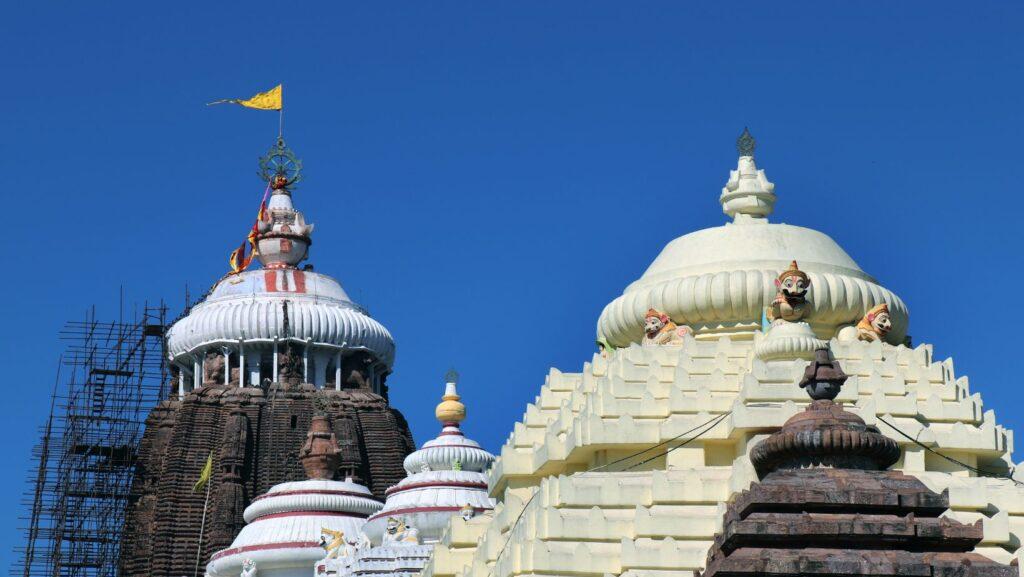
Rameswaram:
This temple is dedicated to Lord Shiva, the destroyer of the universe. It is located in the Ramanathapuram district of Tamil Nadu, on an island that is connected to the mainland by a bridge. The temple is believed to be the place where Rama, an incarnation of Vishnu, worshiped Shiva to absolve his sins after killing Ravana, the demon king of Lanka. The temple is one of the 12 Jyotirlingas or luminous manifestations of Shiva.
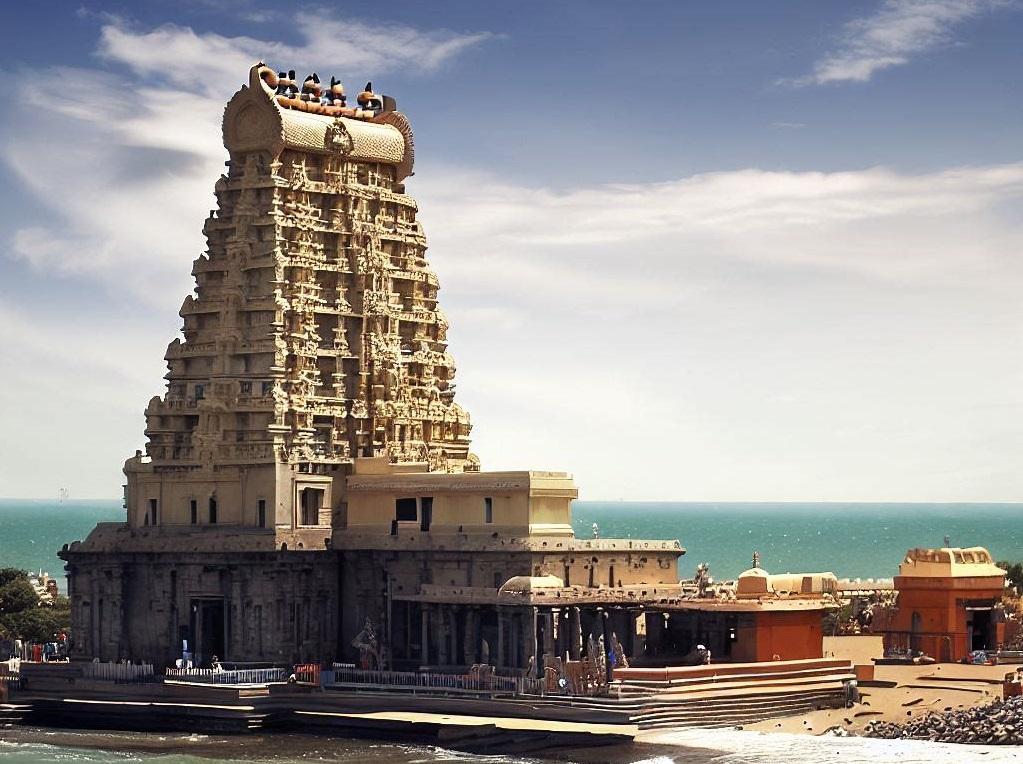
The Char Dham in India are not only places of worship but also sources of inspiration and enlightenment. They represent the four aspects of life: dharma (righteousness), artha (wealth), kama (desire), and moksha (liberation). By visiting the Char Dham in India, one can attain peace and happiness in this world and beyond.
Need to Know Before Visiting Char Dham in India: Tips and Insights
How to Plan Your Trip to Char Dham in India?
Visiting Char Dham in India is a once-in-a-lifetime experience that requires careful planning and preparation. Here are some tips and insights on how to plan your trip to Char Dham in India:
- Choose your route: There are two main routes to visit Char Dham in India: clockwise and anti-clockwise. The clockwise route starts from Badrinath and ends at Rameswaram, while the anti-clockwise route starts from Rameswaram and ends at Badrinath. Both routes have their own advantages and disadvantages, depending on your preference and convenience. You can also choose to visit only one or two temples out of the four if you have limited time or budget.
- Book your tickets: The best time to visit Char Dham in India is between April and November when the weather is pleasant and the temples are open for pilgrims. This also means that this period is the peak season for tourism and you may face high demand and prices for flights, hotels, and tour packages. Therefore, it is advisable to book your tickets well in advance to avoid any hassle or disappointment. You can also look for some online deals and discounts that may offer you cheaper rates and better services.
- Pack your essentials: Visiting Char Dham in India involves traveling through different terrains and climates, so you need to pack your essentials accordingly. Some of the things that you should pack are:
- Clothing: You should pack comfortable and modest clothing that covers your arms and legs, as you will be entering sacred places. You should also carry some warm clothes, as the temperature may drop at night or in higher altitudes. You should also bring some rain gear, as the monsoon season may bring unexpected showers.
- Footwear: You should wear sturdy and comfortable footwear that can withstand long walks and rough roads. You should also carry some extra pairs of socks and sandals, as you may need to remove your shoes before entering the temples.
- Accessories: You should carry some essential accessories such as sunglasses, hats, scarves, umbrellas, water bottles, snacks, medicines, toiletries, etc. You should also bring some religious items such as flowers, incense, prasad, etc. if you wish to offer them to the deities.
- Documents: You should carry some important documents such as your passport, visa, identity proof, travel insurance, etc. You should also keep some copies of these documents in case of any loss or theft. You should also have some emergency contacts and helpline numbers handy in case of any trouble or emergency.
Follow the rules:
Visiting Char Dham in India is a matter of faith and respect, so you should follow the rules and etiquette of each temple. Some of the rules that you should follow are:
- Dress appropriately: You should dress modestly and respectfully when entering the temples. You should avoid wearing any leather items or revealing clothes. You should also cover your head with a scarf or a cap if required.
- Maintain cleanliness: You should maintain cleanliness and hygiene when visiting the temples. You should not litter or spit in or around the premises. You should also avoid eating or drinking inside the temples. You should also wash your hands and feet before entering the temples.
- Respect the rituals: You should respect the rituals and customs of each temple. You should not touch or disturb the idols or the priests. You should also not take any photographs or videos inside the temples without permission.
Planning a trip to Char Dham in India requires careful consideration and thorough preparation. By following the steps outlined in this guide, you can ensure a smooth and enjoyable journey to these sacred sites. Remember to research the best time to visit, arrange transportation and accommodation in advance, pack appropriate clothing and essentials, and create a detailed itinerary.
